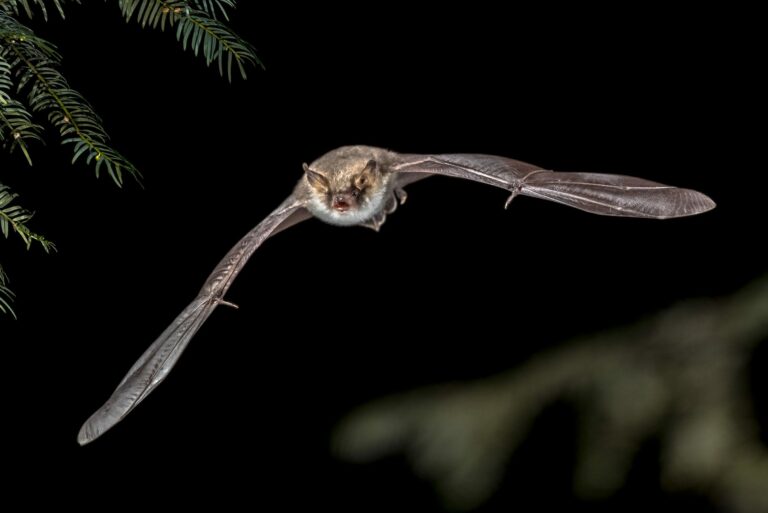Myotis natteri

The Fringed Bat has a head-body length of 40-50 mm, a wingspan of 240-280 mm, and weighs 5-10 g. The ears are relatively short, measuring 14-18.5 cm in length. Myotis natteri hibernates in caves, tunnels, cellars, or tree cavities (Schaefer 2018). Its dorsal side is brown-gray in color, while the belly is lighter. This species becomes active early in the evening and flies out multiple times during the night to search for food. The Fringed Bat inhabits forests and parks with abundant vegetation (Southern 1965). Reproduction occurs in the autumn, after which several female individuals form colonies with their young, while males only occasionally join them. Otherwise, males live in small groups or alone near the colonies (Halczok et al. 2017).
Diet: Fringed Bats feed on insects and arachnids, which they either pluck from plants or catch while in flight (Southern 1965).
Conservation status: According to the Red List of Germany, the Fringed Bat is considered “not endangered,” but it is classified as “strictly protected” under Annex IV of the FFH Directive.
-
Halczok, T et al. (2017)Evidence for genetic variation in Natterer’s bats (Myotis nattereri) across three regions in Germany but no evidence for co-variation with their associated astroviruses. In: BMC Evol. Biol. 17 (1), S. 5.
-
Schaefer, M (2018)Brohmer – Fauna von Deutschland. Ein Bestimmungsbuch unserer heimischen Tierwelt: Quelle & Meyer Verlag GmbH & Co.
-
Southern, H (1965)Handbook of British mammals. Mammal society of the British isles. Unter Mitarbeit von Robert Gillmor und Erik Thorn: Blackwell Scientific Publications Oxford.